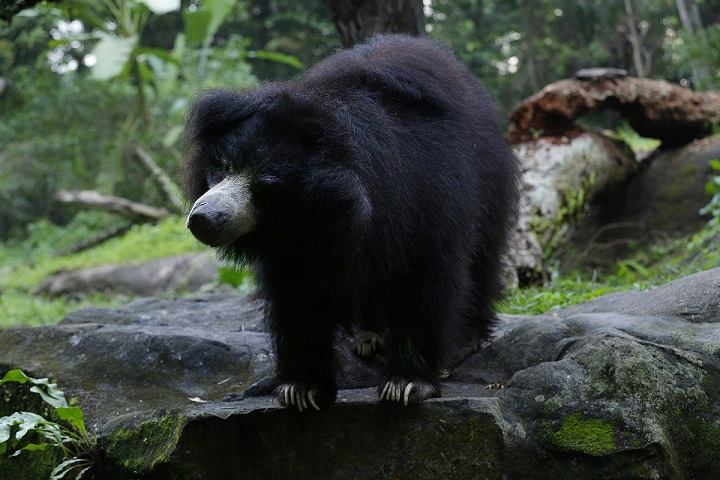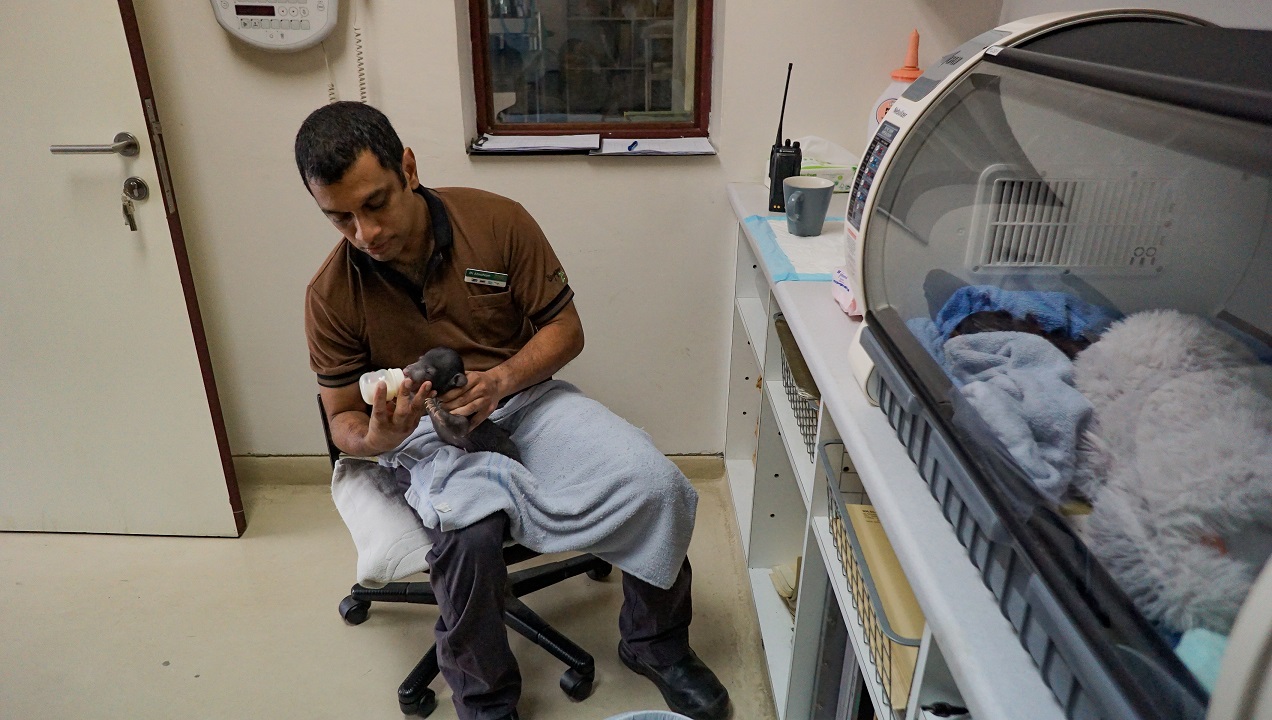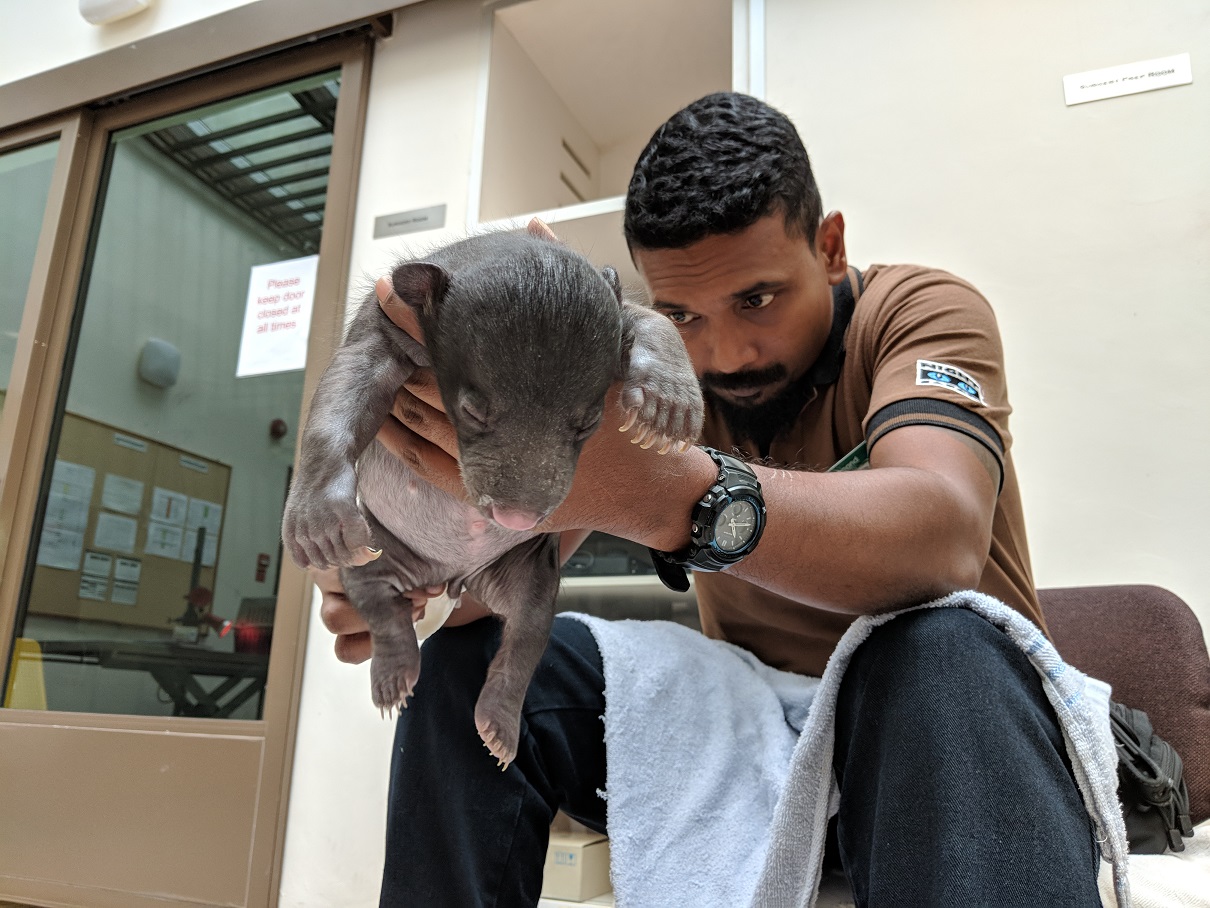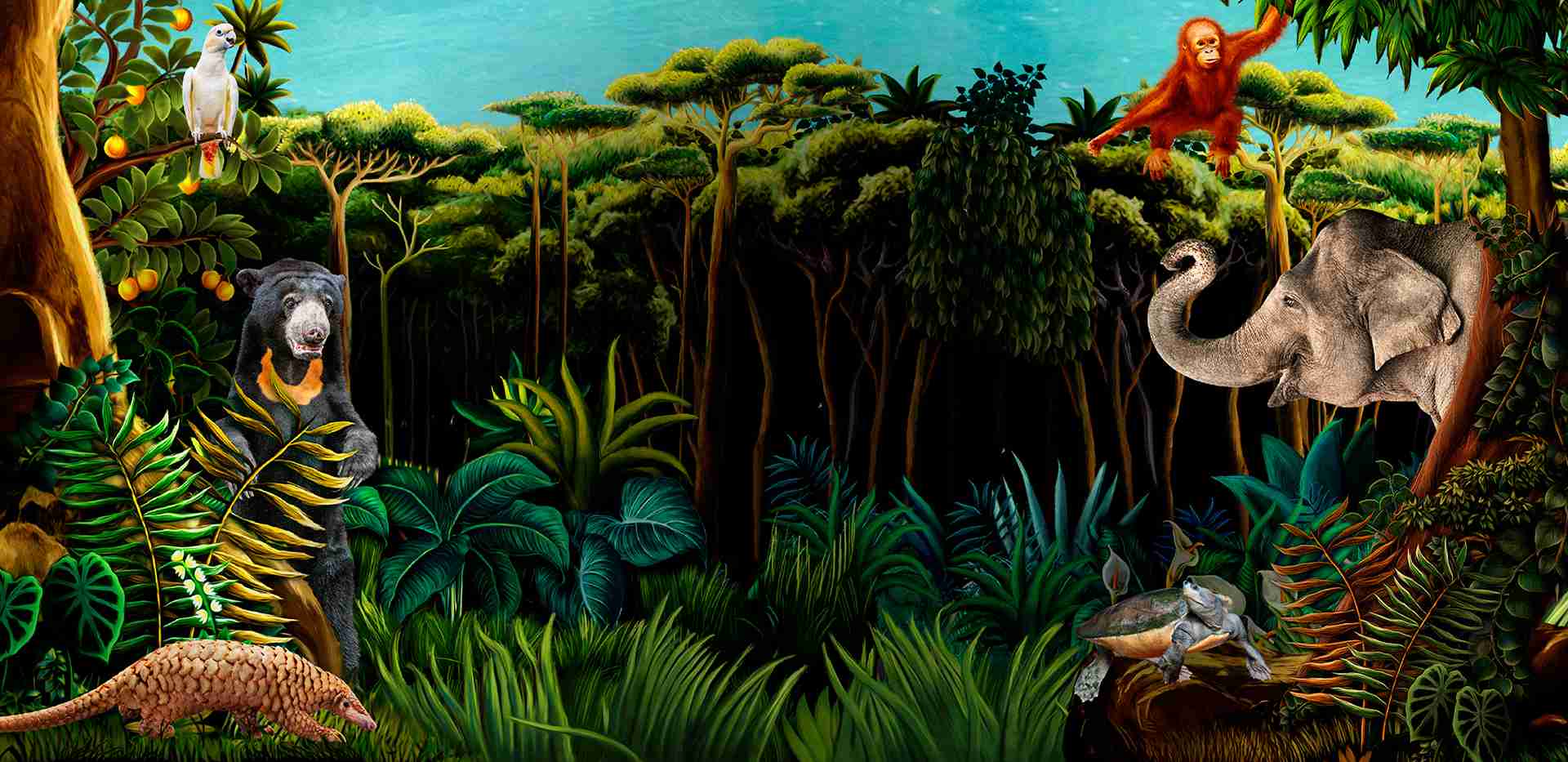Double happiness at Night Safari with arrival of twin sloth bear cubs
21 OCT 2018Night Safari welcomed a pair of twin sloth bear cubs in mid-September. The pair are being hand-raised by human carers who have tried everything possible—from simulating sloth bear milk to creating cozy dens—to be bear-like moms.
PHOTO CREDITS: WILDLIFE RESERVES SINGAPORE

Sloth bears are possibly best known to children through the character Baloo the bear from Rudyard Kipling’s The Jungle Book. Night Safari is home to three adult sloth bears, including Helga and Krishna, new parents of twin cubs.
PHOTO CREDITS: WILDLIFE RESERVES SINGAPORE
Sleepless nights, adjusting to the newborns’ feeding schedule, making sure they were comfortable, and taking countless pictures—the human carers looking after a pair of sloth bear cubs since their birth in mid-September are living the life of ecstatic new parents.
The twins were born to 17-year-old Helga and 14-year old Krishna in Night Safari. As Helga is an inexperienced mother, the animal care team decided to hand-raise the cubs to give them the best chance of survival and has since been providing round-the-clock care in a rather bear-like fashion.
The cubs’ milk, for instance, is a special formula with protein and fat composition close to a sloth bear mum’s milk. The cubs are fed in the same fashion their mom would allow them to suckle—they are held around the chest with lifted heads to minimise air-bubbles in teat. Moving a step further to simulate bear mom behaviour, human carers would use a wet towel to rub the cubs’ genitals to encourage them to urinate and defecate—something bear moms do by licking.
In the wild, cubs would spend the first three months of their lives in the safety of a dark den or burrow with relatively constant temperature and humidity. Under human care, this condition is replicated by a high-tech incubator. Only when their eyes open—usually after 30-40 days—will they be transferred to a new home.
Dr Abraham Mathew, Assistant Director, Veterinary Services, Wildlife Reserves Singapore, said, “The cubs have settled nicely under our care, and having each other’s company has definitely helped to calm them down. While we have done everything possible to give them a head-start in life, in the longer term we hope to re-introduce the cubs to their mom. It might be challenging and would take time, but we will help them along.”
The sloth bears in Night Safari are part of the international managed breeding programme with the European Association of Zoos and Aquaria (EAZA), of which Wildlife Reserves Singapore (WRS), operator of Night Safari, is an accredited member. The birth of the twin cubs and their growing up to be future moms are important to ensure the sustainability of the species in human care.
Baloo the bear, a character in Rudyard Kipling’s The Jungle Book, is possibly the sloth bear most familiar to children around the world. Sloth bears are native to India, Sri Lanka, and Nepal. They can grow up to two metres in length, stand at one metre high, and weigh up to 140 kilogrammes. The species is listed as ‘vulnerable’ under the IUCN* Red List of Threatened Species, and the cubs’ valuable genetics would be a welcome addition to the global sloth bear breeding programme of which WRS is already a participant .

Dr Abraham Mathew, Assistant Director, Veterinary Services, Wildlife Reserves Singapore, is part of the team providing round-the-clock care for the sloth bear cubs in Night Safari.
PHOTO CREDITS: WILDLIFE RESERVES SINGAPORE

Mr Anand Kumar, Assistant Curator of Carnivores, Zoology, Night Safari, examines one of the sloth bear cubs after a feed. Born in mid-September, the twin cubs have passed their first month mark.
PHOTO CREDITS: WILDLIFE RESERVES SINGAPORE

